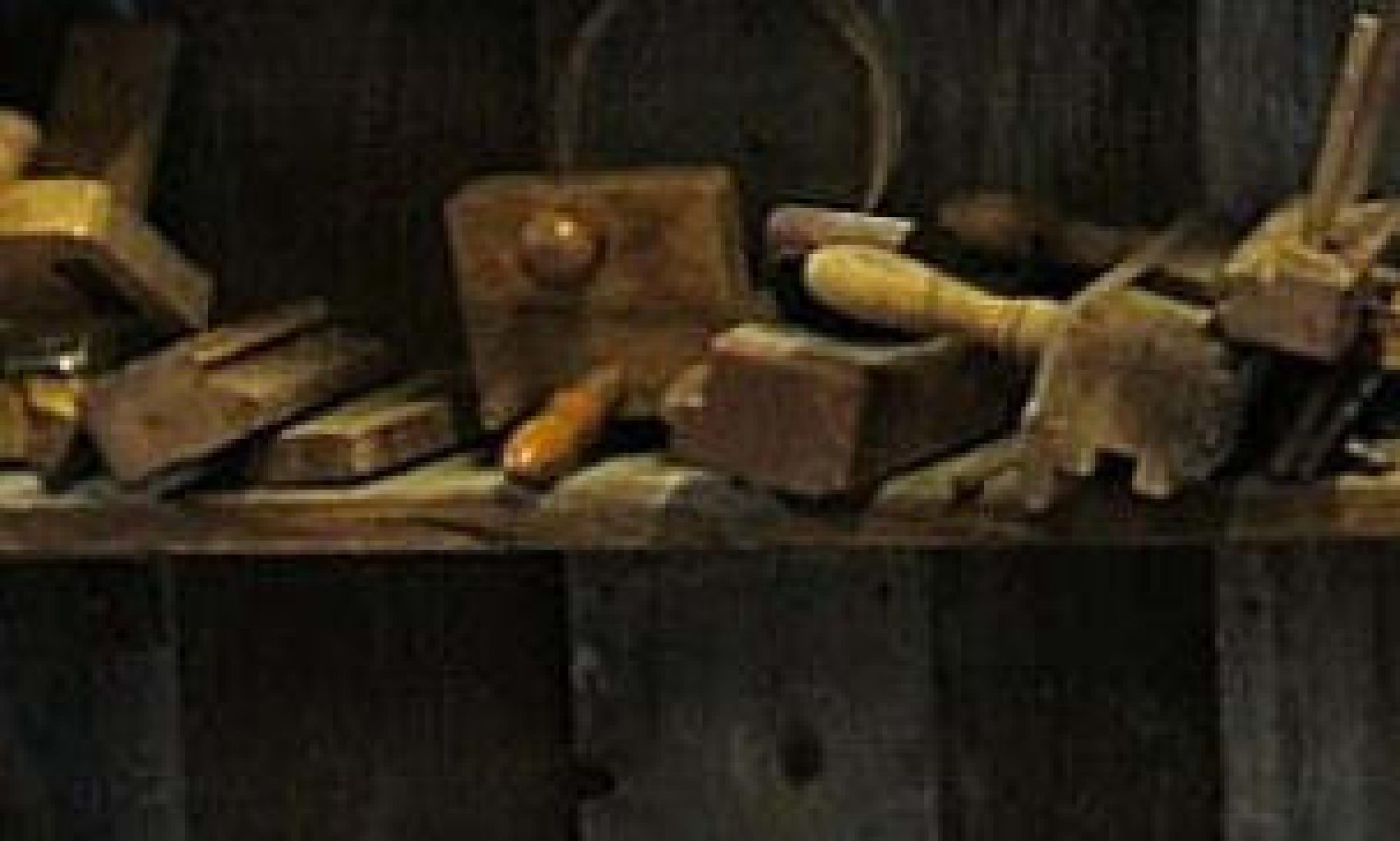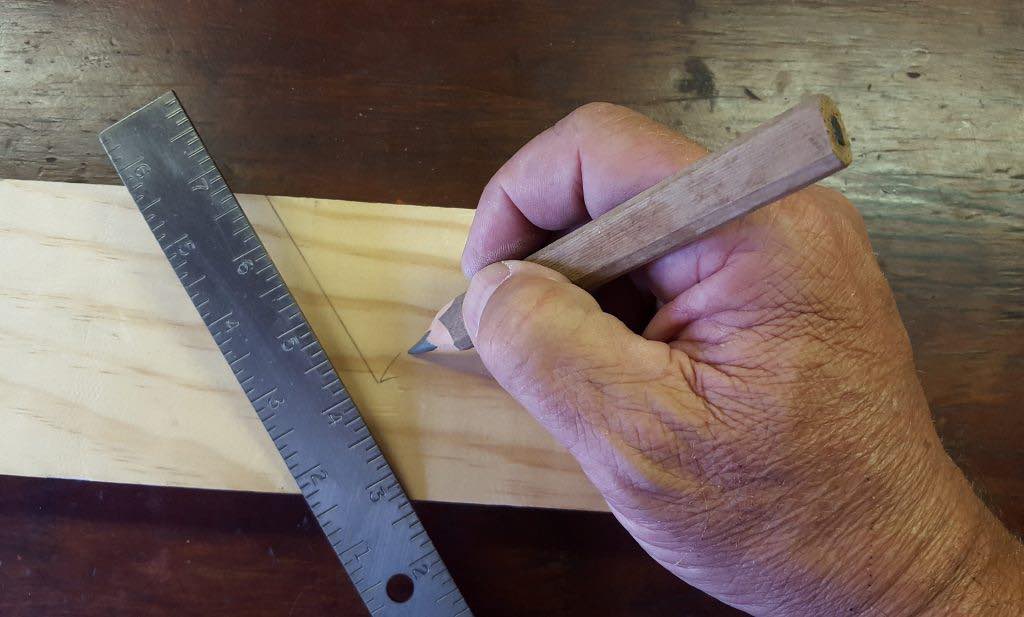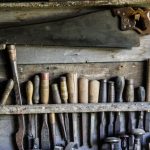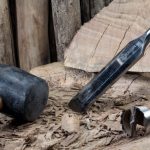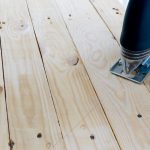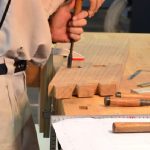You surely are interested in creating accurate designs. They become usual when the right tools are close at hand. Which are the available marking wood tools? You surely are interested in the woodworkgin marking tools and their uses and how can you improve your results using them. You certainly will enjoy adding the adequate marking tools to your workshop. It’s important to know these and other woodwork tools names. Then let’s see marking and marking tools.
So get started woodworking and making your ideas!
Showing 25–32 of 32 results
-
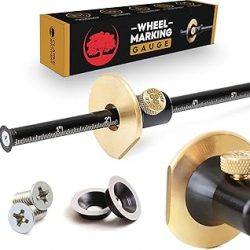
Clarke Brothers Wheel Marking Gauge – Woodworking Marking Scriber Kit With 2 Replacement Cutters – Wood Marking Tools With Graduated Inch & MM Scale – Solid Metal Bar Wood Scribe Tool For Carpenter
View Detail... -

Milescraft 8408 Center Finder – Center Scriber and Offset Measuring & Marking Tool for Woodworking
View Detail... -
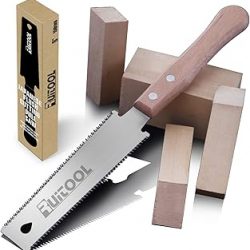
RUITOOL Japanese Hand Saw 6 Inch Double Edge Sided Pull Saw Ryoba SK5 Flexible Blade 14/17 TPI Flush Cut Beech Handle Wood Saw for Woodworking Tools
View Detail... -
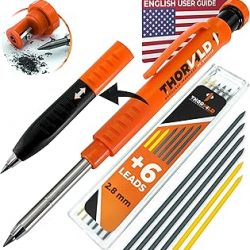
THORVALD New 2-in-1 Carpenter Pencils with Finger Grip for Carpenter (Incl. 7 Leads + Sharpener) Solid Mechanical Pencils with Fine Point/Best Marking tools Construction/Carpenters/Scriber
View Detail... -
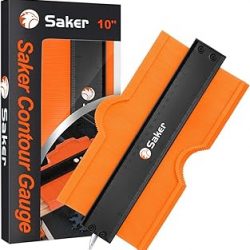
Saker Contour Gauge (10 Inch) Profile Tool-Adjustable Lock Gift for Men Women Dad Him Boyfriend Husband-Precisely Copy Irregular Shape Duplicator-Welding Floor Woodworking Tool Tracing
View Detail... -
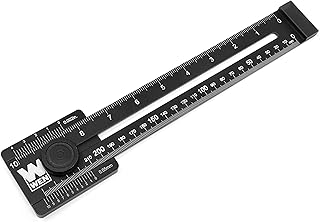
WEN ME251R 10-Inch Aluminum Offset Marking Gauge and Layout Tool with Laser-Etched Scale
View Detail... -

SWANSON Tool Co S0101 7 Inch Speed Square, Blue
View Detail... -
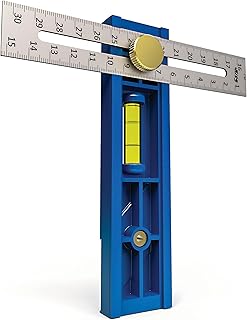
Kreg KMA2900 Multi-Mark Multi-Purpose Marking & Measuring Tool, Alloy Steel – Measuring Tools for Woodworking – Measurement Tool – Carpentry Tools & Accessories
View Detail...
Buying Marking tools in Carpentry
Like many other sites, we don’t try to tell you what is marking tools or which are de basic marking tools in carpentry or marking tools for woodworkers you should buy. How could we say you which marking tool to buy without knowing your budget, your expectations, your projects, your goals?
But certainly, there are some principles it can be followed. To be a woodworker is not to be a tools collector. And it’s not true, like in other disciplines that the best is to have the smallest possible set of marking tools in workshop. Then it depends on your goals and your specific projects.
In the other way, about marking tools is true that many of them make things too too too much easier to get results on precision woodworking than not having them. Like a center finder. Maybe is not in the must-have or basic tools you need but after using it you never will return to remember how you had done before to live without it.
Then, put hands to work is a wood, sorry, a good advisor. Especially doing those tasks repeatedly and not being conformist. But knowing the adequate marking tools, and having worked before let you know which tasks could be easier if you have that wood marking tool.
Wood Marking Tools are closely related to quality, and to ease of use, or better said, to ease to carry out a task, like delimit parallel lines or find the center of a piece, or mark a line in a curved surface.
So.. continue reading about Wood Marking your way.
Marking Tools in Woodworking
As you want to avoid negative results, you don’t want to mark a part inaccurately. Which will be the marking tools you want to keep within easy reach and you will use virtually every day
Marking Tools are critical to achieving professional woodworking results with a reasonable amount of effort (and tries).
Learning to be an experienced woodworker may take time but you can rely on high quality marking tools to get the lines scribed right the first time generating professional results from the beginning.
Some of these marking tools names are: marking knives, scribers, pencils, and gauges. They, like all woodworking tools, have proper roles and must be understood to be used effectively. For that reason, when buying the marking tools you want, read carefully their instructions to find the full list of uses each one has.
Allow Accurate Wood Marking
Which are these carpentry tools and their functions? They are used for doing anything such as cutting, shaping, drilling to a piece of wood, scribing a line and performing a Wood Marking. You can draw a parallel line to the edges, find the center of a piece, jig jag line or rounds of a workpiece with them.
If you don’t mark precisely, your project parts will become like a modest suit
Woodworkers who nicely build their projects with firm, concise markings built their creations soon and efficiently, with fewer difficulties. Woodworkers who laid out their projects with dizzy and irregular markings had to work at a slower, less productive velocity.
Obviously, that affect directly the quality of the final result, and you surely can be close to quality being a beginner or an expert.
Woodworking Marking Tools And Their Uses
There is a broad diversity of marking tools and gauges from old knives unchanged for centuries to modern gauges inspired by ingenious innovation.
Marking tools in Carpentry play a key role in Accurate Woodworking
Marking is an essential point in any woodworking project. The most common woodworking marking tools are pencil, gauge, scriber, marking knives, awl. Here it is provided a marking tools list that does not intend to be an exhaustive list nor a basic list. It’s only a list of marking tools examples, in most cases with the marking tools meaning. But in this list you will know not only the marking tools name but some of their uses. In the list there are also some of the marking tools definitions. It’s good you know them and decide which are in your case the essential marking tools to build your well-equipped workshop. Then, let’s see these carpentry tools and their uses.
Marking Knife Definition
A marking knife scores razor-thin lines and it is much better than an old carpenter’s pencil making a wide swath.
Marking knives can consistently produce a very fine, precise line according to previous carpentry measurements. The produced knife line can be used as a physical demarcation, especially across the grain of the wood, which provides a registration for that woodworking following tools.
Wood Marking gauge
What is a marking gauge?
The typical marking gauge definition is a tool used in woodworking to mark out lines for cutting or other operations.
What is a marking gauge used for?
The marking gauge is one of the essential tools among the woodworking marking tools. You can know marking gauge definition by its use: It is mainly used for cutting or for other operations in woodworking plans. One of the functions is to scribe a parallel line to a reference edge or surface. Some woodworkers use a pencil marking gauge for resawing too.
The marking gauge parts are a beam, a headstock, and a scribing or marking implement, typically a pin, knife, pen or wheel.
Marking gauge pin
It is a small pin with a sharp pointed tip. The pin is dragged along the wood with the point marking a thin line.
Marking gauge fence
Its function is to hold the marking gauge’s position. It can be moved along the stem and secured in position with the thumb screw.
Marking gauge thumb screw
It allows the user to turn it to secure the fence in place and prevent it moving.
Marking gauge stem
It allows the tool to be set to different measurements.
Some of the types of woodworking marking gauges on the market are:
Marking gauge
Normally woodworkers use this tool for scribing tenons and dovetail shoulder lines. Moreover, sometimes it is also used for marking a rabbet.
When using it you should run the tool in line with the wood grain. The risk if you don’t do that you could produce inaccurate jig jag line.
There are a wide diversity of sizes, and most of them can be adjusted. Much larger marking gauges are also known as panel gauges.
Mortise Gauge
A mortise gauge has two pins where one of them is adjustable relative to each other. It allows you to scribble two lines simultaneously including different widths. Normally it is used in mortise and tenon joinery project.
There is also combination gauge and there are also mortise gauges available in different stem lengths.
Cutting gauge
Some of the marking gauges come with a knife and they are named “cutting gauge”. This tool can be used to mark wood against the grain with exactitude. It can cut clean and precise deep lines. You can also use this gauge to cut through thin materials like veneer.
Wheel gauges
Wood Wheel Marking gauges contains a rounded edge instead of a pin to mark a surface. The round blade contains in two separate stems. As a result, they can be adjusted according to each other.
Pencil
A pencil it’s …. a pencil.
Pencils are essential marking tools to woodworkers as you can easily mark a line where accuracy is not a concern. They have some restrictions; for example, they cannot mark a sharp line and the mark may be unintentionally erased.
But in woodworking (and in life) there are many options.
Some of them retain its sharp point longer but makes a lighter, less visible line on most woods. Another option is the white pencil very useful to mark dark woods. Also, you can consider how fine is the line you need to draw. Some woodworkers sharpen them to a chisel point with a single pass on very fine sandpaper.
There are also sets of pencils. And also there are diverse erasers, like the gray kneaded and the white eraser.
Mechanical pencil
A mechanical pencil’s thin mark with a consistent width if the pencil is held near vertically. For many, it is much better than an old carpenter’s pencil making a wide swath.
Some carpenters use it more than any other in the shop as it produces a reasonably fine line
Scriber marking tool
A scriber is a hand tool that has a simple, very sharp point like a knife without an edge. A scriber makes a more noticeable mark than does a marking knife. It also has less inclination to deviate by following the grain. Many woodworkers prefer not to use the scriber for marking lines across the grain of the wood to avoid cutting the fibers and not making fair lines. But certainly, the lines with the scriber marking tool are more accurate and sharp than the pencils or ink.
Scratch awl
In woodworking plans, the scratch awl is the woodworking tool used as a point marking tool. It scribes a line across the timber so that a hand saw or chisel can be run properly.
Dovetail Marker
A Dovetail marker is a tool to help to do dovetail joints.
A dovetail joint or simply dovetail is a joinery woodworking technique including furniture, cabinets, and more. It generates a resistance to pulled apart two parts:
The dovetail joint is commonly used to join the sides of a drawer to the front. A series of ‘pins’ cut to extend from the end of one board interlock with a series of ‘tails’ cut into the end of another board. The pins and tails have a trapezoidal shape. Once glued, a wooden dovetail joint requires no mechanical fasteners.
More Woodworking marking tools people buy
The woodworking marking tools are generally used in very close relation to woodworking measuring tools, or woodworking layout tools, or woodworking angle tools. In many bibliography group them as wood measuring tools and marking tools. And in many cases manufacturers create woodworking tools that are combination of both.
Many other tools that are also considered marking tools are used as a guide or are tools used above marking tools. Some woodworkers call them to measure or layout tools. marking t-rule, marking center finder, Try square, miter square, steel rule, t-bevel are such type of tools. Then if you don’t find the marking tool for the purpose you want you can search it also in the woodworking measure tool section.
Conclusions about Marking Tools in WorkShop
As we seen, basically marking tools that conserve the good and are precise enough are our key factor to help even unexperienced woodworkers to make great quality jobs. Why to learn with a lot of errors if there is a specialized tool for that task? Check the use and the purpose of each one and select the most addecuate marking tools for your workshop.
You may also like…
Consider which are the woodworking tools you want to get to build the workshop of your dreams.
Review the types and alternatives to get the essential tool used by expert woodworkers when generating fine woodworking and woodcarving pieces.
Review which helps do you have to the wood cutting activity including power, safety, and handtools.
What do you prefer to buy? Review portable and fixed alternatives for the Woodworking Bench, the place where most of your work will happen.
